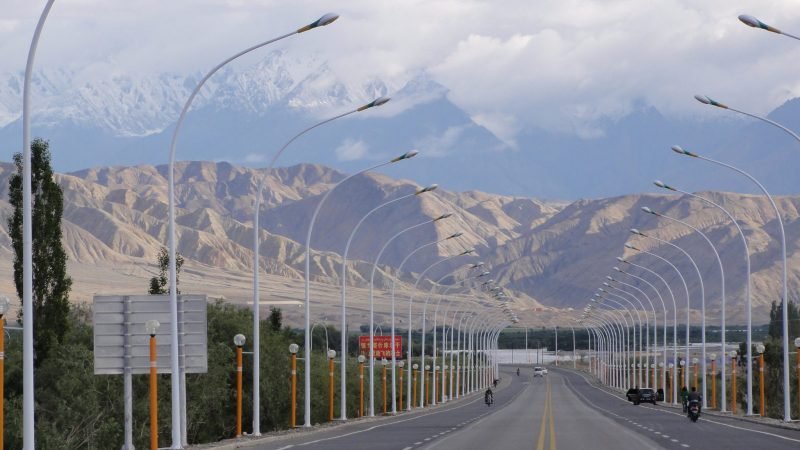Connectivity in Central Asia: Imperative for India and China

For two thousand years, Central Asia played a pivotal role as a land bridge between Asia and Europe. Historically, the Turkestan region was not just a centre for economic interaction between these two major continents but was also famous juncture for cultural, political and social exchange. In the last century, the region was distinguished as a backyard of the communist rule. Throughout the last two centuries, the world looked at Central Asia as a mere transit route or a submissive political landmass rather than an important actor with engaging potential in the Eurasian region. The relatively small populations, huge land areas and tough mountainous terrain pose enormous challenges for construction and maintenance of infrastructure in Central Asia. In the early nineteenth century, the Central Asian region became a hotbed of great power rivalry between the Russian and British empire.

Massive Industrial nationalization under Communist Party after October revolution included oil refineries and gas fields of Central Asia. However, local infrastructure was devoted towards the Moscow’s two major interests in the region i.e. cotton production and energy exploitation. Whole of soviet railway system has been built by specifically keeping Moscow at its nucleus. “All roads and rail-roads built northwards into Russia and it was almost impossible to travel between the provinces of East-West Kazakhstan without a stop in a Moscow.”1 Disregarding intra-state borders in soviet infrastructural planning compromised inter-regional connectivity within five Central Asian Republics in post-soviet era.
The main issue in the post-soviet era revolved around energy transportation as all the major energy pipeline ran to Moscow or connected with Russian ports. Even the energy matrix at local level centred around Siberian oil fields. After, the disintegration of the Soviet Union new republics approached western governments for boosting industrial growth. But there was no alternative available for the oil extraction and transportation other than soviet pipeline infrastructure. The energy was directed towards European Russia as a part of complex conduit framework. Hence, initially to invest in Central Asia ‘Chevron’ negotiated with ‘Transneft’, the Russian company that monopolised pipelines in Central Asia.
Even today the significance of better connectivity in Central Asia is directly related to the engagement of Eurasia’s global trade markets. Tashkent’s ongoing reform program is an opportunity to address the regional connectivity issues in CARs. Central Asia’s biggest challenge is disorganisation of its border than the quality of infrastructure for the creation of the regional trading network. Policies are being embraced for opening up inland routes but the governments are yet to form a grip on its geographical barriers.
Trade corridors will certainly offer great benefits in regard to economic growth, job creation and reduction of poverty. However, these proposed corridors are exceeding cost and capital resources available with these countries. Therefore, with profiteering approach, some international players are interested in trapping Central Asian states in their subjugation policy.
In recent years, China’s rebalancing economic strategy moving towards western landmass steadily relocating its centre away from the eastern coastal region. For Chinese industries consigning products to the west by land seems a reasonable option than air transportation or marine freighting. China’s locomotion strategy in Central Asian Republics developing land transport at a pace which will offer an economical transportation route to Europe via five stans.

The Central Asian leaders earlier viewed Belt Road Initiative as their opportunity to diminish geographical barriers with China and improve cross-country connectivity through this project. They also hoped that the Belt Road Initiative would shift the global economic spotlight on them. However, quite unlike what they hoped, Beijing using the Belt Road Initiative as a geostrategic tool to strengthen and expand its own hegemonic ambitions in the region. Beijing has considered the Central Asian region as a mere conveyance route for European bound Chinese goods and does not guarantee financial benefits and the growth of the region. China has successfully used the BRI to relieve the pressures of overproduction in the mainland and exploit the much-needed hydrocarbon reserves of the region while landing the CARs in its deep debt trap.2
The TAPI Pipeline project an imperative for Indian energy security will deliver promising outputs. With the development of the Galkynysh Gas Field in Turkmenistan estimated to cost $15 billion and the pipeline itself to run another $7.5 billion, the completed TAPI project is projected to export, over three decades, up to 33 billion cubic meters of natural gas per year from Turkmenistan to Afghanistan, Pakistan, and India. It is also expected to generate thousands of construction jobs and around $400 million in annual revenue for the Afghan treasury.3

India has had to explore other options for establishing connectivity with Central Asian Republics to obtain direct access to the hydrocarbon-rich and geo-strategically important region and Afghanistan as well. New Delhi’s establishment of Chabahar port in the Sistan-Balochistan province of Iran allows India to use the existing land connectivity networks to facilitate trade and commercial interactions with both Central Asia and Eurasia and also access the natural resources of the region. Most of Central Asian Republics view India’s Chabahar port as an opportunity to diversify their export markets and control the ambitions of China. These Central Asian nations have admitted New Delhi into the Ashgabat Agreement as an opportunity to establish new trade routes with South Asian Countries.
Stronger regional connectivity approach in Central Asia would contribute to making peacebuilding in Afghanistan. Central Asian states have the potential to engage Afghanistan in the economic integration process. Whether it’s INSTC or the TAPI pipeline initiative these large-scale infrastructures will construct a positive image of Afghanistan rather than as an extremist trouble ground and will connect Central Asia with South Asian counterparts.
Notes
- P.N-162, Feddersen and Zucatto, Infrastructure in Central Asia: Energy and Transportation Controversies, UFRGS Model United Nations Journal.
- Eiji Furukawa, Belt and Road debt trap spreads to Central Asia, Nikkei Asian Review, August 2018.
- Afghan Ministry of Foreign Affairs, “Deepening Connectivity.”


















